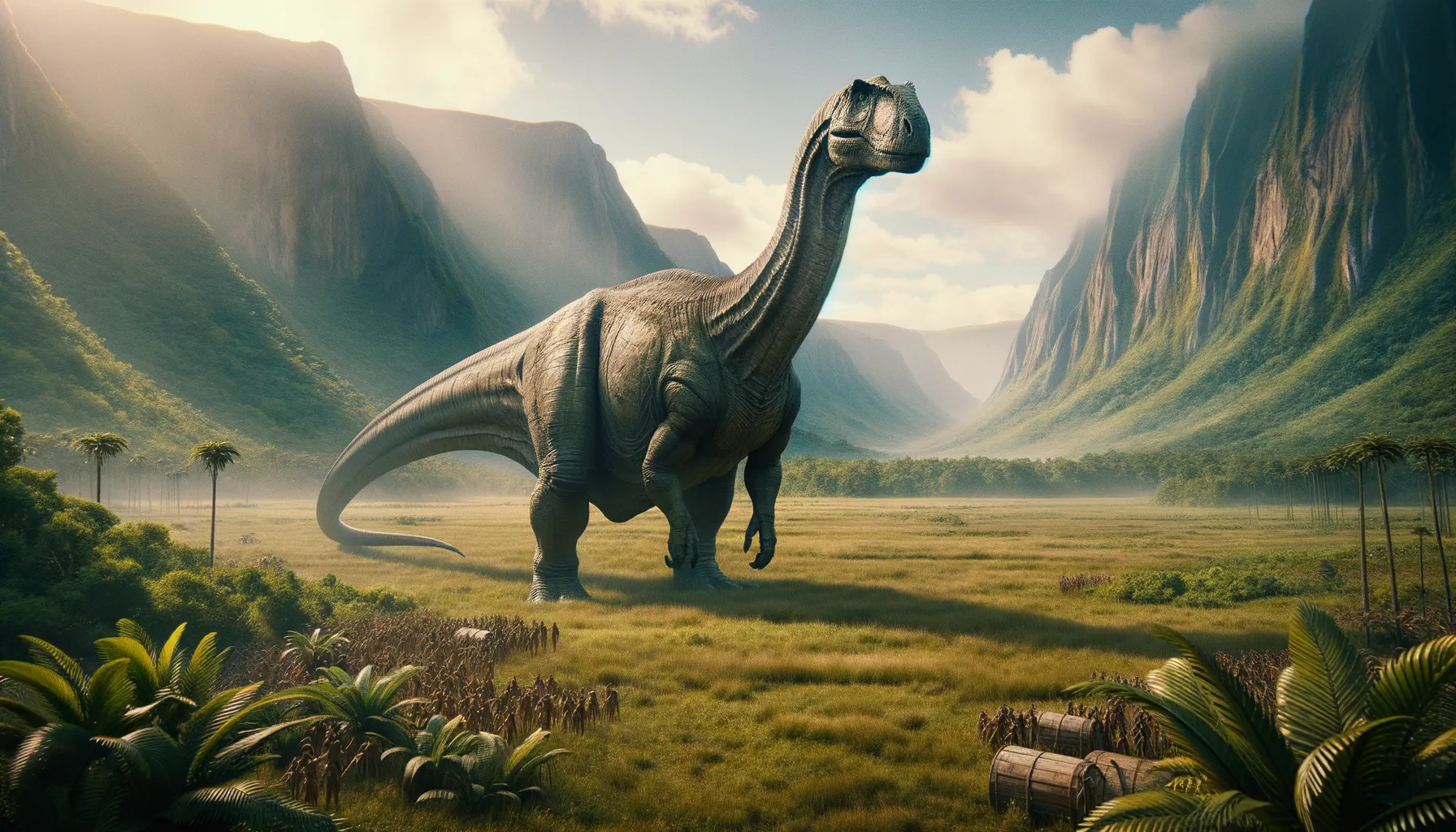
Hudiesaurus
Ancient giant of China's Jurassic landscape.
Period
Jurassic
Length
Stretched over 100 feet long.
Height
Towers at around 15 feet at the shoulder.
Weight
Estimated between 40 to 50 tons.
Hudiesaurus, a gigantic sauropod dinosaur, lived during the Jurassic period. Its colossal size, distinct long neck, and sturdy legs are noted features. Discovered in China, this dinosaur is thought to have roamed vast plains in search of food. Its immense proportions helped it reach high vegetation that other herbivores could not access. Although little is known about its complete skeleton, the fossil evidence is crucial for understanding the diversity and evolution of sauropods.
Diet
Hudiesaurus was herbivorous, feeding on a variety of plant material. It likely consumed conifer leaves, ferns, and other gymnosperms that thrived in its environment.
Hunting
Being a herbivore, Hudiesaurus did not hunt. Instead, it foraged for vegetation and utilized its long neck to reach high and otherwise inaccessible plant life in its habitat.
Environmental challenges
Hudiesaurus faced competition for food resources with other herbivores. Seasonal changes in vegetation and climate would have posed significant survival challenges. Its large size meant that finding sufficient food was critical, and prolonged droughts could be perilous.
Speed
Likely slow due to its massive size.
Lifespan
Could reach several decades, typical of large sauropods.
First discovery
Discovered in the Turpan Basin, China in the 1990s.
Fun Facts
- Hudiesaurus was a massive dinosaur and is believed to be one of the largest sauropods to have roamed the Earth.
- Its name originates from the Chinese word 'hudie', meaning 'butterfly', due to the shape of its vertebrae.
- Hudiesaurus lived during the Late Jurassic period, around 161 to 145 million years ago.
- This dinosaur was discovered in the Shishugou Formation in China, a region well-known for yielding many other dinosaur fossils.
- Hudiesaurus is known primarily from partial remains, including some vertebrae and possible limb bones.
- Based on its limited remains, scientists estimate Hudiesaurus could have been about 20 meters (or 65 feet) in length.
Growth and Development
Hudiesaurus, like other large sauropods, likely experienced rapid growth in its early years. This fast growth rate would have helped it reach sizes that deterred predators. As it matured, its development would focus on expanding its already vast size, allowing it to access different feeding zones.
Habitat
Hudiesaurus inhabited lush floodplains and forested regions of Jurassic China. It thrived in areas abundant with vegetation, essential for its herbivorous diet. The wide-open spaces would have suited its large build, allowing movement and foraging across vast areas.
Interaction with other species
Hudiesaurus likely coexisted with other dinosaurs, both herbivores and predators. While generally peaceful, its size would have offered protection against most carnivores. Interaction with other herbivores could have led to competition for resources, especially during times of scarcity.
Natural lifespan
A Hudiesaurus could live up to 70 or 80 years under favorable conditions.
Reproduction
Like other sauropods, Hudiesaurus likely laid eggs in secluded nests, possibly in groups. The young were independent soon after hatching, although they might have stayed within the herd for protection.
Social behaviour
Hudiesaurus might have traveled in herds, a behavior that increased survival chances. This social behavior would provide protection and facilitate finding food. Although solitary at times, group living was generally beneficial.
Fossil locations
Hudiesaurus fossils have been predominantly found in the Turpan Basin of China. Limited findings suggest a potentially wider range, but significant discoveries remain confined to this region. These fossils offer insight into the Jurassic ecosystem of Asia.
